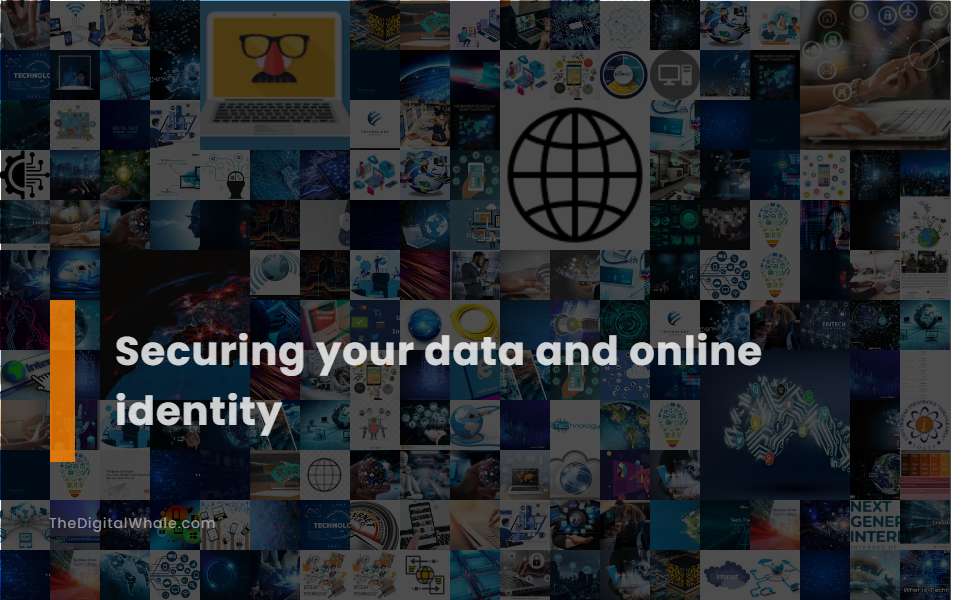Securing Your Data and Online Identity
What are the best ways to protect my online identity and data? What are some of the most common security tips for online identities? Let's find out more about Securing Your Data and Online Identity.

Minimal Data Collection: Collect only the data necessary for your service or product.
To effectively manage data collection, it is essential to focus on gathering only the information necessary for your service or product, thus avoiding the pitfalls of unnecessary storage and analysis issues. Prioritizing quality over quantity ensures the data's relevance and operational efficiency. Moreover, it is crucial to collect data in an unbiased manner, steering clear of leading questions to maintain transparency and protect data integrity and participant trust. For further insights on best practices, consider exploring the Eskuad Blog, which emphasizes maintaining these standards to ensure ethical and efficient data handling.
Encrypt Data: Encrypt sensitive data both at rest and in transit.
Encrypting sensitive data both at rest and in transit is crucial for protecting it from unauthorized access. Data at rest should be encrypted on storage devices, while data in transit should be encrypted using protocols like HTTPS, SSL, or TLS to prevent interception and ensure confidentiality and integrity. To explore more about these essential practices, visit the detailed guide on Data Protection available on Digital Guardian's website.
Controlled Access: Restrict access to data to only authorized individuals.
Controlled access to data involves setting up access rights and restrictions, authenticating and authorizing users, and employing methods like Mandatory Access Control, Discretionary Access Control, and Role-Based Access Control to ensure only authorized individuals can view, modify, or access specific data. This approach is vital to maintaining the privacy, confidentiality, integrity, and availability of sensitive information. To dive deeper into these methodologies and their applications, you can explore more on Data Access Control at Pathlock.
Strong Passwords: Use strong, unique passwords and consider password managers.
To secure your data and online identity, use strong, unique passwords that are at least 16 characters long, containing a mix of letters, numbers, and symbols, and are randomly generated. Consider using a Password Manager to create, store, and manage these passwords, as it adds an extra layer of security and simplifies the process of maintaining unique passwords for each account.
Multifactor Authentication: Enable token-based or other forms of multifactor authentication.
Multi-Factor Authentication (MFA) enhances data security by requiring users to provide two or more verification methods, which makes it significantly harder for cyber criminals to commit identity theft and reduces the risk of data breaches and unauthorized access. When combined with token-based authentication, like the techniques discussed on Hoop.Dev, an extra layer of security is added. This involves using digital tokens that are difficult to copy or forge, requiring additional verification methods such as something you know, have, or are, to further protect against unauthorized access.
Related:
What are the pros and cons of using technology to increase productivity? How can I increase productivity in the workplace by using technology? Let's find out more about Using Technology To Improve Productivity.
Virtual Private Network (VPN): Use a VPN to secure connections, especially on public Wi-Fi.
Using a VPN on public Wi-Fi encrypts your data, hides your IP address, and protects your online activities from hackers and snooping, ensuring your privacy and security even on unsecured networks. For more detailed insights on how this works, explore the [VPN](https://surfshark.com/blog/wifi-vpn) guide on Surfshark's website, where you can learn more about the benefits and functionalities of VPNs in safeguarding your online presence.
Regular Audits: Conduct regular privacy and security audits to identify weaknesses.
Conducting regular privacy and security audits is crucial for identifying vulnerabilities, ensuring compliance with regulatory requirements, and protecting against cyber threats, thereby safeguarding your organization's data and maintaining customer trust. For more detailed insights, refer to the Importance of Security Audits on the Johanson LLP website, which provides comprehensive guidance on how these audits can reinforce your organization's security posture.
Clear Consent and Policy: Obtain clear user consent and have a clear, understandable privacy policy.
To secure your data and online identity, it is crucial to obtain clear user consent through a transparent and easily understandable privacy policy, ensuring compliance with laws like the GDPR and CCPA by clearly disclosing data collection, usage, and sharing practices. Creating a clear consent policy involves using plain language, offering granular choices for specific data uses, and providing users with control over their personal data, all while ensuring compliance with relevant regulations such as the GDPR and CCPA.
Privacy by Design: Integrate privacy controls into the design of systems from the beginning.
Privacy by Design integrates privacy controls into the system design from the beginning, ensuring proactive and preventative measures to protect user data, setting default high privacy settings, and embedding privacy into every stage of the development process to enhance security and user trust. For a comprehensive understanding of these principles, explore the Principles of Privacy by Design on OneTrust's blog, which provides insightful information on implementing privacy practices seamlessly across systems.
Secure Data Storage: Ensure data is stored securely using methods like encryption, masking, and backups.
To ensure Secure Data Storage, implement a layered security strategy that includes methods such as encryption to protect data in transit and at rest, and data masking to obscure sensitive information. Incorporating immutable storage can prevent data tampering, while air-gapped backups like tape storage safeguard against cyber attacks such as ransomware. Additionally, utilizing access control mechanisms, maintaining secure backups, and adopting a zero-trust architecture further enhance data security. For more insights, explore the best practices on TechTarget.
Related:
What are some tips for personal branding online? What are some things you have done to increase your career and personal brand? Let's find out more about Building A Personal Brand Online.
